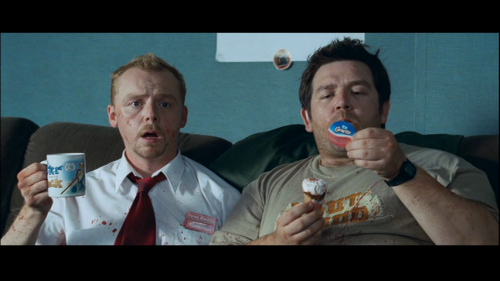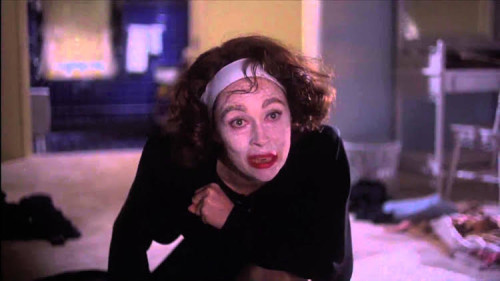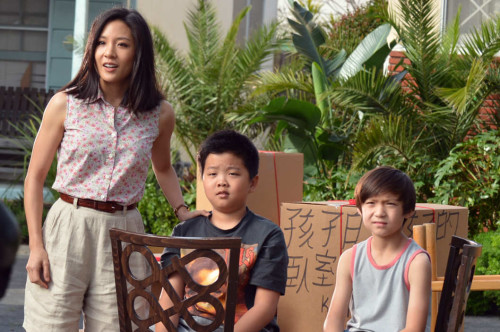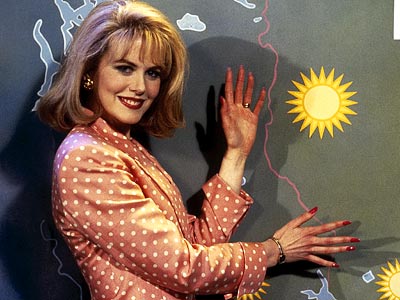Dolores Jane Umbridge: Page, Screen, and Stage by Jackson Adler
Umbridge works as Undersecretary to Minister of Magic Cornelius Fudge. Through her position in the patriarchal wizarding government, Umbridge enables job discrimination, segregation, incarceration and harsh sentencing, and physical violence and genocide against marginalized people. She not only politically supports these efforts, but personally enacts violence against marginalized people and their allies, including children.
Never Fear: Unlikable Black Women on Orange Is the New Black and Luther by Rachel Wortherly
When I searched my mental rolodex for Black female characters in film or television who are unlikable my mind continued to circle. I was lost.
“I’m Not Bad, I’m Just Drawn That Way”: The Exceptionally Beautiful Anti-Heroine by Jessica Carbone
And if you’re anything like me, every reader of this site wants the same thing: to see more portrayals of women on film, televisions, and beyond that reflect their complexities, strengths and weakness alike. We want a greater range of body types, a greater representation of lifestyle choices, a broader world of occupations and skill sets and backstories and destinies.
Evil-Lyn: Fantasy’s Underrated Icon by Robert Aldrich
A character with few rivals and even fewer scruples, Evil-Lyn was arguably one of the better developed villains in the show. And in the annals of females from sci-fi/fantasy, her name should be spoken of in the same breath as Wonder Woman and Princess Leia.
A Fine Frenzy: With an Outspoken Anti-Heroine and a Feminist Lens, Young Adult Is Excellent by Megan Kearns
In this witty, hilarious and bittersweet dramedy, Theron plays Mavis Gary, an author of young adult books living in Minneapolis. Mavis’ life is a hot mess. She’s divorced, drinks her life away and the book series she writes is coming to an end. She was the popular mean girl in high school who escaped to the big city. Mavis returns to her small hometown in Minnesota full of Taco Bells and KFCs intending to reclaim her old glory days and her ex-boyfriend, who’s happily married with a new baby. As she fucks up, she eventually questions what she wants out of life.
Political Humor and Humanity in HBO’s VEEP by Rachel Redfern
She’s a toxic political figure, a creator of monumental gaffes and inappropriate situations who doesn’t even have the excuse of good intentions. Her intentions are always self-serving and she treats her staff atrociously, often assigning them the blame for her mistakes.
Bad Girls and (Not-So)-Guilty Pleasures in The Bling Ring by Amy Woolsey
Coppola’s refusal to condemn, explain or apologize for her characters makes for a rather opaque experience. To state the obvious, these are not likable individuals. They exhibit no visible remorse for their crimes, seemingly oblivious to the concept of personal boundaries, and think about little besides fashion and D-list celebrities.
Why Maxine from Being John Malkovich Is The Best by Sara Century
Maxine is a perfect character. She stands up for herself, takes no guff off of anyone, and goes for what she wants while issuing remarkable and hilarious ultimatums to those around her. I don’t just like Maxine. I don’t just love Maxine. I am Maxine.
American Mary: In Praise of the Amoral Final Girl by Mychael Blinde
Directed by the Soska sisters, American Mary features a complicated female protagonist who starts out as a likable badass but ends up as an amoral psycho. The film celebrates the power of bodily autonomy and depicts the horror of taking it away.
Reclaiming Conch: In Defense of Ursula, Fairy Octomother by Brigit McCone
Ursula’s show-stopper, “Poor, Unfortunate Souls,” presents case studies of mermen and mermaids made miserable by culture. What this song really teaches is that internalizing cultural messages is a fatal weakness, and rejecting cultural conditioning is a source of great power. Small wonder that Ursula had to die the most gruesome onscreen death in all of Disney.
Bad Girls Go to Heaven: Hollywood’s Feminist Rebels by Emanuela Betti
Hollywood has produced some of the most memorable bad girls and wicked women on-screen—from silent era’s infamous vamps to film noir’s femme fatales—but bad women do more than just entertain, particularly if we’re talking about the sweepingly emotional and excessively dramatic world of woman’s melodrama.
Why We Love Janice and Why We Love to Hate Janice by Artemis Linhart
Is Chandler going somewhere, just minding his own business? Chances are that Janice is just around the corner. As Janice once put it, “You seek me out. Something deep in your soul calls out to me like a foghorn. Jaaa-nice. Jaaa-nice.”
Cristina Yang As Feminist by Scarlett Harris
As people, no matter what gender, it is seemingly second nature to want others to like us and to portray our best selves to them. Just look at the ritual of the date or the job interview. That Cristina defied this action (though we have seen her star-struck when meeting surgeons like Tom Evans and Preston Burke) made her not just a feminist character, but a truly human(ist) one.
Triumphing Mad Men’s Peggy Olson by Sarah Smyth
What exactly, then, makes a character “unlikeable”? How can we define this complex term? Broadly, a character is unlikeable when they behave in an amoral or unethical way (which, of course, depends upon our individual morals and ethics), particularly when their motivations are unclear. However, when it comes to female characters, this term seems to diversify and pluralize.
Hate to Love Her: The Lasting Allure of Blair Waldorf by Vanessa Willoughby
In an interview with the New York Times, Gillian Flynn says, “The likability thing, especially in Hollywood, is a constant conversation, and they’re really underrating their audience when they have that conversation. What I read and what I go to the movies for is not to find a best friend, not to find inspirations…It’s to be involved with characters that are maybe incredibly different from me, that may be incredibly bad but that feel authentic.”
Young Adult‘s Mavis Gary Is “Crazy” Unlikable by Diane Shipley
Mavis is truly transgressive. Not only is her plan against most people’s moral code, it shows no solidarity for the sisterhood and no respect for the institutions women are most conditioned to aspire to: marriage and motherhood. Mavis alienates feminists and traditionalists alike. Not that she cares–she only wants to appeal to men. And she has done so, seemingly effortlessly, for a long time.
Ruthless, Pragmatic Feminism in House of Cards by Leigh Kolb
Claire is a horrible human being for many, many reasons–but her abortions aren’t included in those reasons. The show makes that clear.
Top 10 Villainesses Who Deserve Their Own Movies by Amanda Rodriguez
While villainesses often work at cross-purposes with our heroes and heroines, we love to hate these women. They’re always morally complicated with dark pasts and often powerful and assertive women with an indomitable streak of independence.
Stephanie McMahon Helmsley: The Real Power in the Realm by Robert Aldrich
She’s proven herself to be as diabolical as she is brilliant, manipulating wrestlers against one another and circumventing any and all rules to reach the ends of her choosing. She’s pit wrestlers in matches with their jobs on the line, or the jobs of their spouses (in the case of a short-lived feud with Total Divas darling Brie Bella), added heinous stipulations to matches, or just flat-out fired anyone who disagreed with her.
Suzanne Stone: Frankenstein of Fame by Rachael Johnson
The would-be news anchor is not only an extraordinarily unlikable–though entertaining–protagonist; she also embodies certain pathological tendencies in the American cultural psyche.
King Vidor’s Stella Dallas and the Utter Gracelessness of Grace by Rebecca Willoughby
These repeated conflicts make for a number of scenes in the film that, as Basinger has also asserted, are painful to watch. Our emotions are in conflict: Stella’s aims are noble, her execution hopelessly flawed. It’s hard to like her when she’s so inept, impossible not to sympathize because her purpose is so noble.
The Complex, Unlikable Women of House of Cards by Leigh Kolb
These women are complex, if not likable, and that’s a good thing.
Summer: Portrait of a Recognizable Human by Ren Jender
When the family sits down to eat, a platter full of pork chops is placed in the center of the table just as Delphine announces she is a vegetarian. As the others interrogate her (a tedious line of questions familiar to many vegetarians) and one of the men even offers her a plate full of rose petals to feast on, she tries to walk the tightrope many women do–in all sorts of conversations–of not wanting to be seen as a “bother,” but still trying to stick up for her own beliefs.
Anne Boleyn: Queen Bee of The Tudors by Emma Kat Richardson
Anne Boleyn was considered by many contemporaries to be the very living, breathing definition of an unlikable woman. And perhaps “unlikable” is too soft a term here – at points in the 16th century, following her execution on trumped up charges of adultery and treason, Anne was so widely reviled that very few of her own words, actions, or even accurate portraits remain today, thanks to Henry’s redoubtable efforts to wipe her off the record completely.
Patterns in Poor Parenting: The Babadook and Mommy by Dierdre Crimmins
This is not to say that Amelia and Die are not sympathetic characters. Both want to do the best for their sons, but neither can handle the stress and actual responsibility of disciplining them. I do not mean for this to seem like an attack on Die and Amelia’s parenting skills, but rather a way to look at the sudden appearance of women in film who are not good at parenting.
The Real Hated Housewives of TV by Caroline Madden
Naturally, we are all on these anti-heroes’ sides, despite their bad deeds. And Tony Soprano, Don Draper, and Walter White all have an antagonist: their wives. They call their husbands out on their lies, moral failings, and oppose them. Thus, they are seen as the nagging wife that everyone hates.








